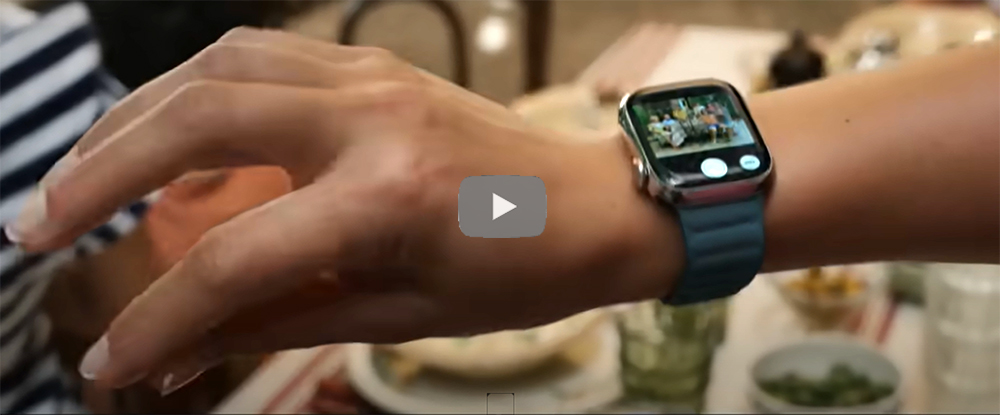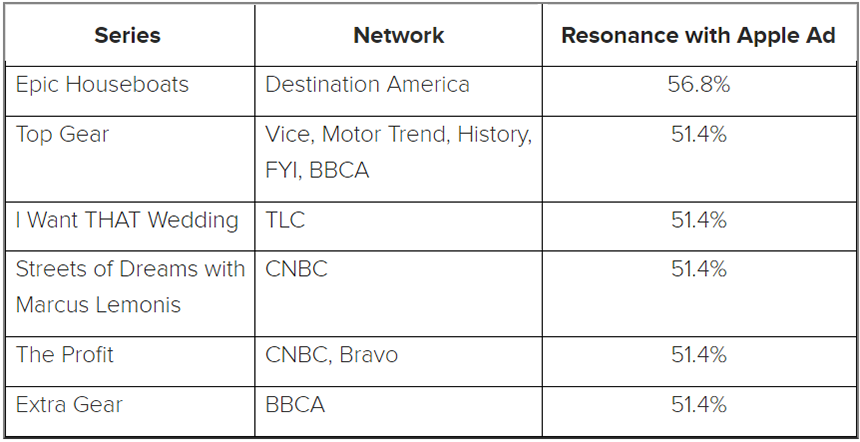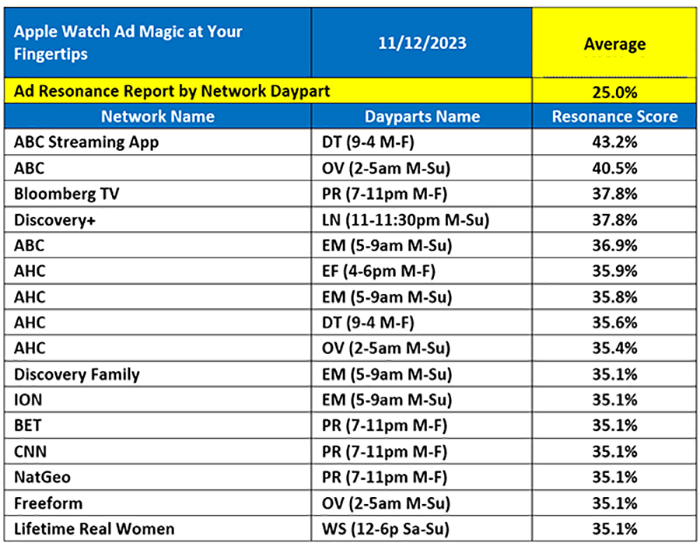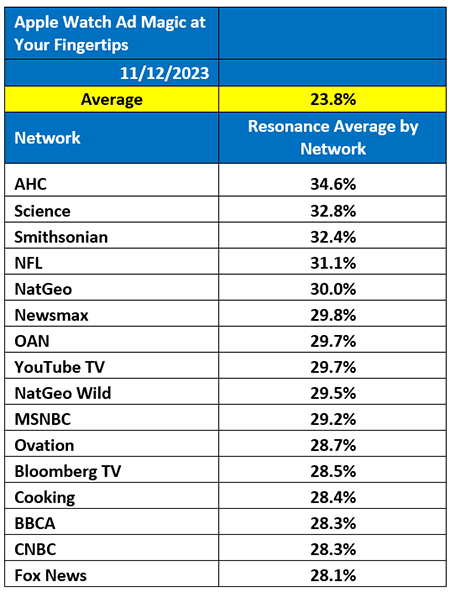Arthur C. Clarke famously said “any sufficiently advanced technology will be indistinguishable from magic.” The latest Apple Watch ad is a great demonstration of this principle. No selling words are necessary in an ad when the product demonstration speaks for itself so eloquently.

Apple Watch Series 9 TV Spot, 'Magic at Your Fingertips'
This is an ad which creates a longing to own such a product, that will affect a large audience far beyond the bounds of the usual tech early adopters, almost anyone from toddlers to centenarians. The old saying about getting what you want with a snap of your fingers comes to life in this superb creative execution. Except you don't even need to be able to snap your fingers, even easier finger moves are all it takes to tell the watch what you want.
Like all powerful ads, this ad deserves to be placed into environments that will further amplify its effects, where the ad will not change the viewer’s subtle mood and mindset created by the program. RMT (of which I am Chairman) has provided me with a standard report, ranking contexts that resonate with this ad in terms of values, situations, character and personality traits, moods and emotions, and content descriptors.*
TV Programs
As usual, the TV series that top the ranking in terms of resonance with the new Apple Magic ad are not intuitive. When old-fashioned media planners/buyers use their gut to guess at the best environments maximizing the synergy of the ad and the environment, they generally pick one obvious variable, in this case “magic”, and they go look at programs involving the supernatural. The ad actually has 37 variables (we call them DriverTags, short for behavior driving metatags) and the gut method would use only one of them.
One TV series has 53 DriverTags of which 21 are matched to the 21 of the 37 DTs in this Apple Watch Magic ad. That series is Epic Houseboats. Its Resonance Score is 56.8% (21 divided by 37, the number of matched DTs divided by the total number of DTs in the particular ad).
Interestingly, the next highest series on television in terms of alignment with this ad are all reality shows, reflecting the practicality of the product, the sense of competency and power it gives you, more than its magical appearance:

As is typically the case, these tend to be programs that have relatively modest CPMs. Selling titles have never been priced based on specific ads, but are set based almost entirely on audience size and demographics. This means that a buying strategy that reflects the specific ad that one is placing, is quite likely to find contexts that are quite cost-efficient. The budget also tends to be allocated on an extremely dispersed basis, automatically providing reach advantages.
20% Resonance is the minimum recommended level for placements. For this ad, there are 4565 programs active on U.S. television that meet this minimum requirement. Even in a very large schedule, it’s likely that a buy can be made for this ad where the lowest resonance scores are in the 30s.
Network Daypart Rotations
Buying rotations has long been a major practice especially on cable networks in order to pay lower CPMs. This is especially relevant today because of the current desires of advertisers to shrink advertising budgets while maintaining at least the same level of ROI and branding value. Here are the top-ranking rotations in terms of amplification of this Apple Watch Magic ad:

There are a total of 512 network dayparts in which rotations may be bought which meet the minimum requirement of 20% resonance.
Run Of Network
RON is usually an even lower CPM than a daypart rotation. Here are the top-ranking RON opportunities for this ad:

On a RON basis, there are 70 networks that meet or exceed the recommended minimum resonance requirement.
This information is also useful when buying streaming networks which often do not enable program nor daypart level selection.
Why It Makes Sense To Get the Highest Resonance
This curve, derived from the NCS study sponsored by Turner, shows that sales lift increases as resonance scores increase, so buyers should not think in terms of “anything over 20% is OK” but rather should be trying to get the whole campaign to average as high in resonance as possible.

Posted at MediaVillage through the Thought Leadership self-publishing platform.
Click the social buttons to share this story with colleagues and friends.
The opinions expressed here are the author's views and do not necessarily represent the views of